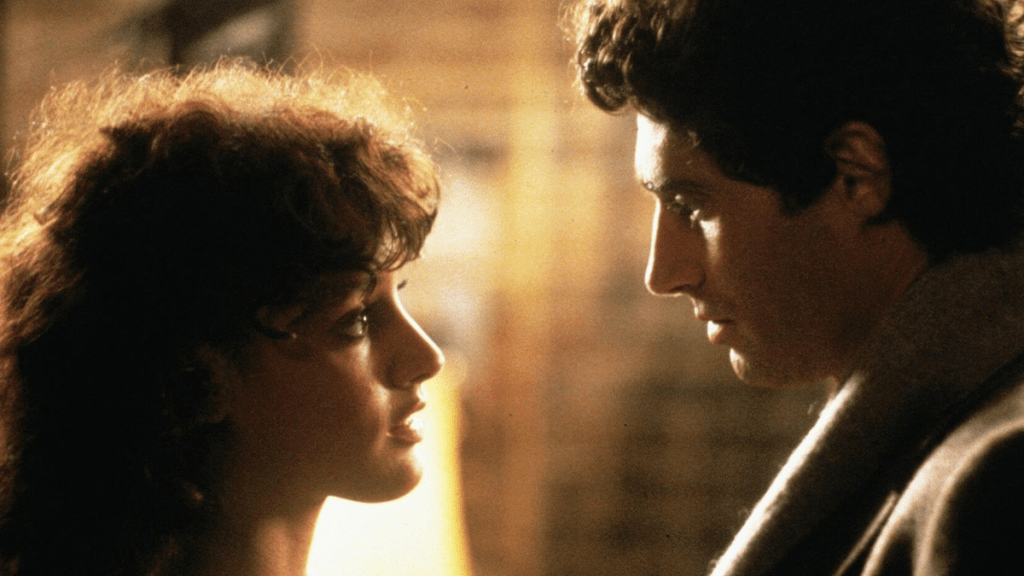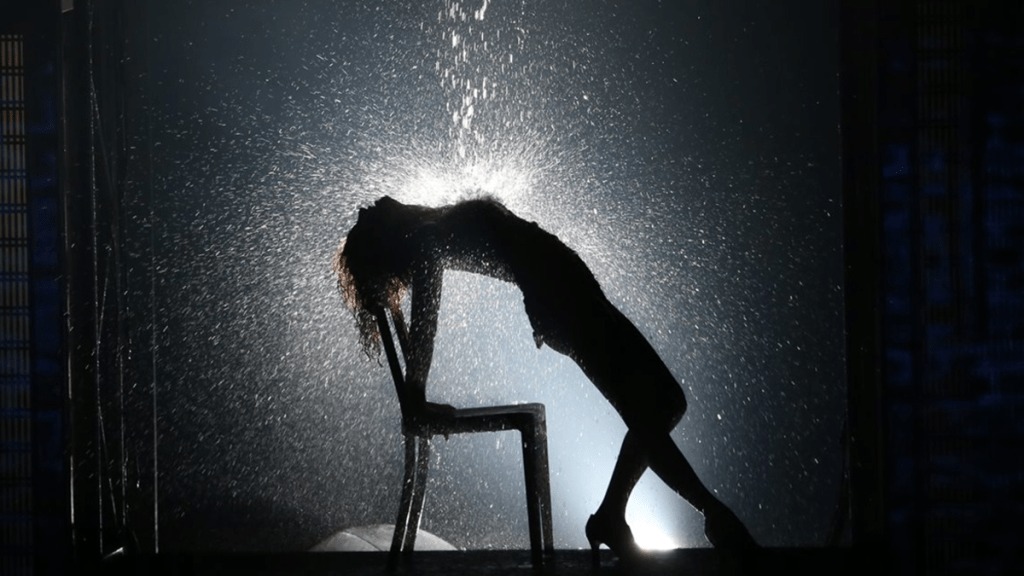ComingSoon Senior Editor Spencer Legacy spoke with Flashdance director Adrian Lyne about the movie’s 40th-anniversary release. The director discussed the movie’s iconic dance scenes and its impact on pop culture over the last four decades.
“Alex Owens is a beautiful young woman who works a day job in a steel mill and dances in a bar at night,” reads the movie’s synopsis. “When Alex discovers that her handsome boss, Nick Hurley, is both interested in her and supportive of her performing career, she renews her efforts to get accepted into a prestigious dance conservatory. Although Alex is frightened of failure, she is cheered on by Nick, as well as by her mentor, former ballet performer Hanna Long.”
Spencer Legacy: The opening dance is so iconic. How important was it to start the movie with a lot of style and get people invested right away?
Adrian Lyne: It’s good to open with some sort of a bang. I knew I wanted to do a wet dance, but I didn’t quite know how to do it, you know? I had to show these studios, who were very skeptical, and I showed them — they’re all sitting in bleachers looking down at me with this girl. And I said, “Well, it’s going to be great, because the water’s going to fly off and her body’s going look marvelous because it’s a sheen with the water, and it’s going to fly into the audience, and that’ll be funny because somebody’ll get wet.”
But all I had was … I didn’t have any lighting or anything like that and I just had this poor girl that who was not even a dancer, I think. I remember it was an awful yellow hose pipe that I was winding around, [Laugh], and hadn’t got the slightest idea what to do. I just knew what I wanted. It was later on that we thought would dump the water on her, and we were frightened it would break her neck.. It was very heavy, the water. There was a lot of it.
It’s also hard to imagine any other actress in the role of Alex, but what qualities about Jennifer Beales made you really know that she was the perfect fit?
She looked marvelous. I got her to dance a bit and … I have to say, she’s not the best dancer in the world, you know, but I got her to cry and stuff — she did that very easily because she lost all of her luggage at the airport, so she was in a state. Anyway, it was vulnerability, really. She had a childlike quality, which I thought was lovely.
I hadn’t seen Flashdance for 20 years or something, but I saw it yesterday and I thought, “Well, she held it together. She was very likable.” So I think that was the main thing, actually. And of course, we had somebody different doing the dancing. So in a way, I got the best of both worlds, because the dancer was very good.
When it first came out, Flashdance had more of a mixed critical response, but it was a huge box office hit and it has really stood the test of time. Why do you think critics looked down on it initially, but moviegoers have continued to flock to it?
It’s very funny. I wrote this down, actually. There were two reviews that I made a note of. One said it was “state of art in filmmaking.” I was so thrilled. And all of the others were disastrous. One, in particular, said, “Don’t look for publicity on this film. Just look for strategic signs of pollution.” They hated the movie! The studio sold off 30% of their interest in the movie — financial interest — two weeks before it came out.
Wow.
They thought that we’d fiddled the test results, you know? They thought that we’d put our friends into the audience at the previews. Just before the movie came out, I couldn’t get anybody on the phone. Nobody, nobody, nobody at all. [Laugh].

It must be so nice to see that it has this wildly different reception now, all these years later.
Yeah, they’re going to bring it out again, apparently, for a little bit in the theater, which should be fun.
The movie’s really stylish and we can see it’s influence all throughout the ’80s, especially in Jerry Bruckheimer and Don Simpson’s work. How do you view the movie’s impact on film?
Well, after the movie came out, I was asked to do A Chorus Line. These two old Broadway producers, they said, “We like the movie. We like Flashdance.” They were 90 — really old, these guys. They’d been around since the ’30s. One of them said, “You’ve got the buttons right.” And I guess the button is going out at the end of a scene with a bang that pushes you into the next scene. I didn’t do it. I think maybe I should have done it … Richard Attenborough did it, but I didn’t want to get pigeonholed, because I thought a Flashdance as a musical, in a way, though sort of stylized, you know?
Yeah, and that soundtrack is also just as iconic as the movie. Songs like “Maniac” and “What a Feeling” aren’t just perfect for the movie, but they’re also great songs. Can you tell me about finding that perfect combination of song and dance that we see in the movie?
Well, I worked very closely with a guy called Phil Ramone — lovely guy — who was like the music producer, really. I worked with him specifically on “Maniac,” and I had heard a track from a group called Kraftwerk. Have you heard of them?
I have. I’ve heard their name before.
They’re German. In this particular tune, they had a bell like rhythm that went bing-bong bing-bong, like that. And I said, “Why don’t we use this in ‘Maniac?'” So we stole it from this group and put it in. He was a sweet guy, Phil Ramone.
There’s also a Flashdance TV reboot happening at Paramount+. What do you think is important to keep from the original in modernizing this story?
I suppose the fact that these girls in Pittsburgh were essentially strippers, but they felt that they weren’t. They had their own little sets, like that thing with the TV set. I like the fact that it’s very low-tech. There was a fan inside and there was a light inside that made that big shadow on the wall. Mainly, I think energy and the vulnerability. Jennifer Beals had real vulnerability. She had a sweetness to her, you know? She had a rage and broke his window, but she was essentially a child, which I thought was nice.
Jennifer Lopez paid homage to Flashdance in her music video for “I’m Glad ,” and it was homaged on a Deadpool poster, too. How does it feel to see your movie used as a cultural touchstone even decades later?
Yeah, it’s fabulous. It’s fun. It’s great. It’s great. Especially when nobody thought the movie was going to do a nickel. Nobody, nobody.
It must be amazing to see that. The movie was shot in and around Pittsburgh, which you mentioned. What really stood out about shooting in that city?
Well, I only shot there for two weeks, but what I did like were those warehouses and the industrial waste and stuff, or the iron. The fact that he took her down there rather than taking her for a romantic walk in a park or whatever — I thought that was fun. To choose abandoned buildings and abandoned factories and stuff. So it’s very good for that. I love that little elevator thing.










